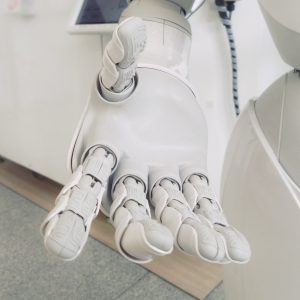EPFL scientists are developing new approaches for improved control of robotic hands — in particular for amputees — that combines individual finger control and automation for improved grasping and manipulation. This interdisciplinary proof-of-concept between neuroengineering and robotics was successfully tested on three amputees and seven healthy subjects. The results are published in today’s issue of Nature Machine Intelligence.
The technology merges two concepts from two different fields. Implementing them both together had never been done before for robotic hand control, and contributes to the emerging field of shared control in neuroprosthetics.
One concept, from neuroengineering, involves deciphering intended finger movement from muscular activity on the amputee’s stump for individual finger control of the prosthetic hand which has never before been done. The other, from robotics, allows the robotic hand to help take hold of objects and maintain contact with them for robust grasping.
“When you hold an object in your hand, and it starts to slip, you only have a couple of milliseconds to react,” explains Aude Billard who leads EPFL’s Learning Algorithms and Systems Laboratory. “The robotic hand has the ability to react within 400 milliseconds. Equipped with pressure sensors all along the fingers, it can react and stabilize the object before the brain can actually perceive that the object is slipping. “
read more at source
